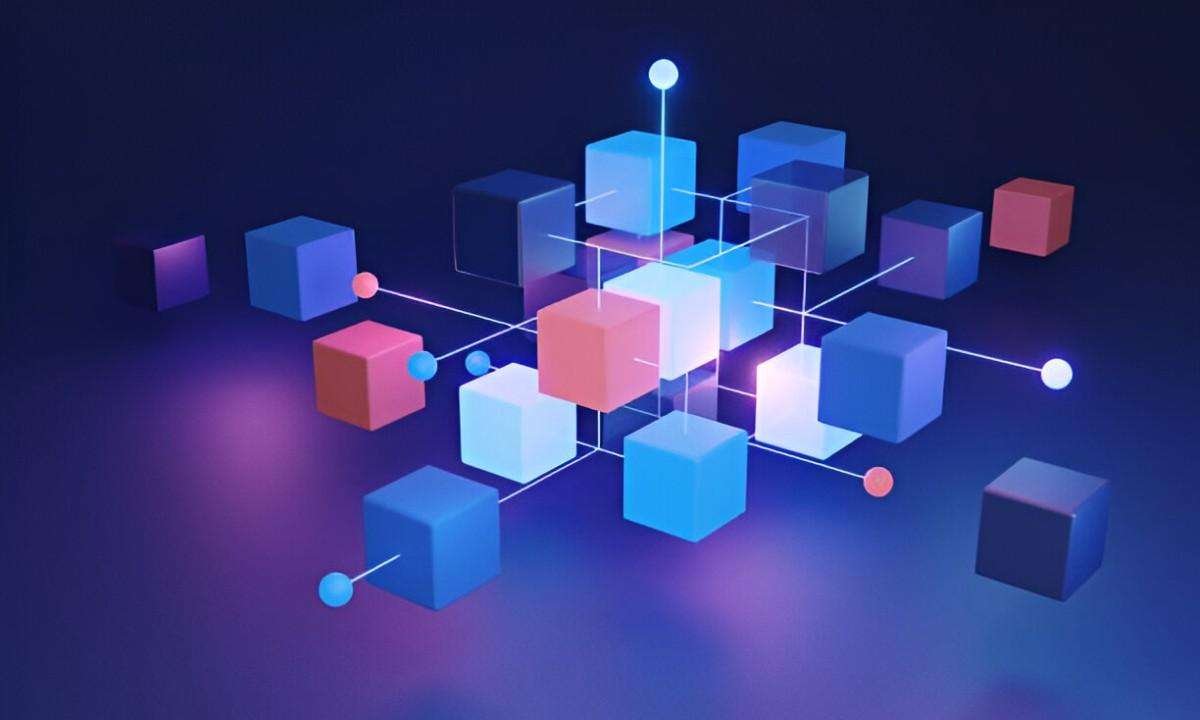As someone who has spent considerable time exploring the realm of blockchain technology, I have come to appreciate the nuances and complexity that come with understanding different blockchain frameworks. One particular innovation that has caught my attention is the Amalgam Blockchain. It’s a concept that, while still relatively new, holds significant promise for the future of decentralized applications (dApps), data sharing, and overall blockchain infrastructure. In this article, I’ll walk you through the fundamental aspects of Amalgam Blockchain, its features, how it compares to other popular blockchain models, and its potential applications in real-world scenarios.
Table of Contents
What is Amalgam Blockchain?
The Amalgam Blockchain is a new breed of blockchain that integrates several features from different existing models, with the goal of offering scalability, security, and interoperability. Essentially, it seeks to combine the best of both worlds by merging multiple blockchain architectures into one unified system. The idea behind this hybrid approach is to overcome the limitations of traditional blockchains while maintaining a high level of decentralization and user autonomy.
One of the main challenges with most blockchain models is that they tend to be either too centralized or too fragmented, making it hard to scale, maintain security, or enable smooth communication between different blockchain networks. Amalgam Blockchain seeks to address these issues by using a hybrid design that allows for more flexible integration, streamlined transactions, and improved interoperability between different blockchain ecosystems.
Key Features of Amalgam Blockchain
- Interoperability: One of the most significant features of the Amalgam Blockchain is its ability to integrate with other blockchains. This means that data and value can move freely between different networks, creating a more cohesive and interconnected blockchain ecosystem. For example, assets on Ethereum can be transferred to the Amalgam Blockchain seamlessly, or vice versa, allowing for greater flexibility and utility.
- Scalability: Scalability has been a long-standing issue for blockchain networks, with many of them struggling to handle a high volume of transactions without sacrificing speed or increasing costs. Amalgam Blockchain addresses this issue through sharding and other advanced techniques, enabling it to handle a greater number of transactions while maintaining low latency.
- Security: Blockchain’s decentralized nature already makes it more secure than traditional centralized systems. However, Amalgam Blockchain takes this a step further by using multiple consensus mechanisms and encryption techniques to ensure that transactions are both fast and highly secure. This hybrid approach makes it harder for malicious actors to compromise the network.
- Flexibility in Governance: Unlike many other blockchain models that rely on strict governance rules, the Amalgam Blockchain offers a flexible governance framework. This allows for a more adaptive and responsive decision-making process, which can evolve as the needs of the network change over time.
Amalgam Blockchain vs. Other Blockchain Models
Now that we have a clear understanding of what the Amalgam Blockchain is and its key features, let’s compare it to other well-known blockchain models, such as Ethereum and Bitcoin. I believe a side-by-side comparison is a great way to highlight the unique advantages of Amalgam Blockchain.
Comparison Table: Amalgam Blockchain vs. Ethereum vs. Bitcoin
| Feature | Amalgam Blockchain | Ethereum | Bitcoin |
|---|---|---|---|
| Transaction Speed | High (due to sharding and hybrid mechanisms) | Moderate (depends on network congestion) | Low (due to block size limitations) |
| Scalability | High (through integration and sharding) | Moderate (scaling solutions like ETH 2.0) | Low (limited by block size) |
| Security | Very High (multi-consensus and encryption) | High (Proof-of-Stake, Proof-of-Work) | Very High (Proof-of-Work) |
| Interoperability | Excellent (cross-chain integration) | Limited (requires bridges for cross-chain) | None (Bitcoin is standalone) |
| Decentralization | High (retains core blockchain principles) | High (Ethereum is decentralized but scalable solutions affect this) | Very High (Bitcoin is the most decentralized) |
| Smart Contract Support | Full (supports decentralized apps) | Full (supports smart contracts) | Limited (Bitcoin doesn’t support smart contracts natively) |
| Governance | Flexible (can adapt over time) | Rigid (depends on Ethereum Foundation) | Rigid (controlled by miners) |
Real-World Applications of Amalgam Blockchain
The potential applications of Amalgam Blockchain are vast, and the more I dive into this subject, the more possibilities I see. From enhancing supply chain management to revolutionizing financial services, the hybrid nature of this blockchain allows it to be used in a variety of fields.
- Cross-Chain Finance: With its seamless interoperability features, Amalgam Blockchain could play a significant role in decentralized finance (DeFi). For instance, users could leverage assets from different blockchains like Ethereum, Binance Smart Chain, or even Bitcoin and combine them into a single platform. This would provide users with the flexibility to interact with a wide range of assets, all while retaining the security and decentralized nature of blockchain technology.
- Supply Chain Management: In industries like logistics and manufacturing, tracking the origin and movement of goods has always been a challenge. Amalgam Blockchain’s ability to integrate data from multiple sources means that it could be used to create a more transparent and efficient supply chain. By using smart contracts, it could automate processes like inventory management and product tracking, reducing human error and fraud.
- Healthcare: The healthcare industry stands to benefit greatly from the capabilities of Amalgam Blockchain. Due to its scalability and security, it could be used for storing patient records across multiple healthcare systems, ensuring that information is easily accessible while maintaining privacy. Additionally, by integrating with other blockchains, it could facilitate the secure sharing of medical data between hospitals, clinics, and pharmacies.
- Voting Systems: Voting systems in many countries are still plagued by inefficiencies and security concerns. Amalgam Blockchain could offer a decentralized and secure alternative for online voting. By ensuring that votes are tamper-proof and auditable, it could increase transparency and public trust in electoral systems.
The Technical Side: How Does Amalgam Blockchain Work?
Understanding how Amalgam Blockchain works on a technical level is crucial if we’re to appreciate its unique advantages. The hybrid nature of this blockchain means that it uses a combination of consensus mechanisms, such as Proof-of-Work (PoW), Proof-of-Stake (PoS), and even more novel approaches like Proof-of-Authority (PoA) for certain transactions.
Sharding and Layered Architecture
Sharding is one of the core techniques used in Amalgam Blockchain to achieve scalability. In essence, sharding breaks the blockchain into smaller, more manageable parts (or shards) to distribute the load. Each shard handles a portion of the transactions, allowing the system to process more transactions simultaneously. This helps reduce congestion and improves the overall speed of the network.
Another key feature of Amalgam Blockchain is its layered architecture. The first layer consists of the main blockchain that handles the core consensus and data storage. The second layer is used for specific tasks, such as smart contracts, dApp interactions, and cross-chain data transfers. By separating these responsibilities, Amalgam Blockchain ensures that the main chain remains secure and efficient while still offering robust support for decentralized applications.
Consensus Mechanisms
As mentioned earlier, Amalgam Blockchain uses a hybrid consensus model. In situations that require high levels of security, the system may use Proof-of-Work, which has been proven effective in Bitcoin and other blockchains. For faster, less resource-intensive transactions, Proof-of-Stake or Proof-of-Authority may be used. This flexibility allows Amalgam Blockchain to adapt its consensus method depending on the needs of the network.
The Future of Amalgam Blockchain
Looking ahead, the future of Amalgam Blockchain appears bright. With the ongoing developments in scalability solutions like sharding, as well as its inherent focus on interoperability, it could be a game-changer for a variety of industries. However, like any emerging technology, there are challenges ahead, particularly in terms of adoption and network security. I believe that, over time, these hurdles can be overcome as the community continues to innovate and refine the technology.
Conclusion
In conclusion, the Amalgam Blockchain represents a promising evolution in blockchain technology. By integrating the best features of existing systems, it offers a scalable, secure, and highly interoperable framework that could support a wide range of applications. Whether it’s in decentralized finance, supply chain management, healthcare, or voting systems, the possibilities are vast. I believe that, as more developers and businesses explore its potential, Amalgam Blockchain will play a pivotal role in shaping the future of decentralized systems.
As I continue to monitor the progress of Amalgam Blockchain, I remain optimistic about its ability to address the scalability and interoperability challenges that many blockchains face today. It’s clear to me that this hybrid model could serve as a foundation for a new era in blockchain technology—one that’s more interconnected, secure, and adaptable.





